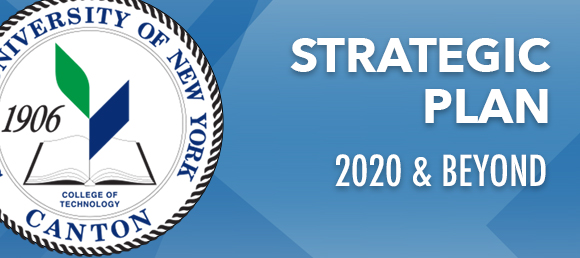Strategic Planning
Planning Process
Level 1 - Assessment & Collaboration
- Shared Governance Committees (e.g., Academic Standards, Faculty Affairs, Curriculum, TLTC, OLRC, Advisory Boards)
- Administrative Committees, Assessment, Task Forces, Working Groups)
Committees are encouraged to work together on issues of mutual interest. Governance Committees make recommendations through Faculty Assembly directly to President. Administrative Committees make recommendations to appropriate Level 2 bodies.
Level 2 - Refinement & Planning
- Executive Cabinet
- Provost's Cabinet (Academic Strategic Planning)
- Facilities & Technology Master Planning
- Executive Diversity Council
Makes recommendations to President's Council based on relevant data/information regarding long-term planning.
Provides rationale when it decides not to move ahead on recommendations from Level 1 Committee(s).
Level 3 - Decisions & Funding
- President's Council (All VPs plus Executive Assistant to the President and Executive Director for University Relations)
Makes recommendations to President on changes to Strategic Plan strategies and goals based on input from Level 1 and Level 2 bodies. Provides rationale for decisions on implementation and funding. Submits annual report on Strategic Planning results to the campus.
Institutional Goals & Objectives
1. Promote Academic Excellence
- Enhance instruction and assessment; support professional development; advisory boards for all academic programs
- Improve facilities/infrastructure/equipment to meet student needs
- Enhance opportunities for applied learning (e.g., research, civic engagement, service learning, internships, international programs, etc.)
- Lower costs to students: open educational resources, low cost, textbook free, improved scheduling
2. Improve Operational Effectiveness
- Identify and implement procedures to increase revenues, promote efficiency, and reduce costs where appropriate
- Align budget with strategic initiatives
- Prioritize customer service
- Streamline workflow processes
- Increase communication & collaboration across the campus
- Capture external funding opportunities
3. Optimize Enrollment
- Adapt to changing enrollment landscape and changed demographics
- Refine & support comprehensive marketing plan and branding
- Enhance retention efforts across the campus
- Increase scholarships and facilitate timely graduation
- Support enrollment activities (e.g., Open House, Admitted Student Days, etc.)
4. Focus on Sustainability
- Enhance energy management systems
- Purchase more energy-efficient equipment; use green products
- Reduce printing
- Reduce solid waste: zero-sort recycling, composting of food waste
- Reflect on sustainability as a priority in the curriculum
5. Enhance Diversity & Welcome
- Implement Faculty Diversity Plan; participate in SUNY Prodi-G program
- Enhance support, mentorship, and community among underrepresented faculty and staff
- Recruit and retain diverse students
- Enhance visibility of cultural diversity
- Promote use of Center for Diversities and Inclusion
- Meet needs of diverse campus community (e.g., neurodiversity)
6. Create a Robust, Active, and Enriching Campus Life
- Infuse academic programming into student life; infuse student life into academic programming
- Encourage greater faculty/staff/student attendance/participation at campus events
- Increase community and connectiveness in virtual and campus-based environments
- Increase sense of community through created traditions
7. Build Greater Awareness of SUNY Canton
- Enhance communications
- Cultivate alumni (incl. virtual)
- Partner with community on initiatives (e.g., Downtown Revitalization Initiative, Entrepreneurship Center)
- Encourage community and civic engagement
- Create pipeline to postsecondary institutions
- Provide programming for workforce development and community needs
- Increase hosting opportunities for community events
Office of the President
34 Cornell Drive
MAC 616 Canton, NY 13617
Phone: 315-386-7204
Fax: 315-386-7934
president@canton.edu


